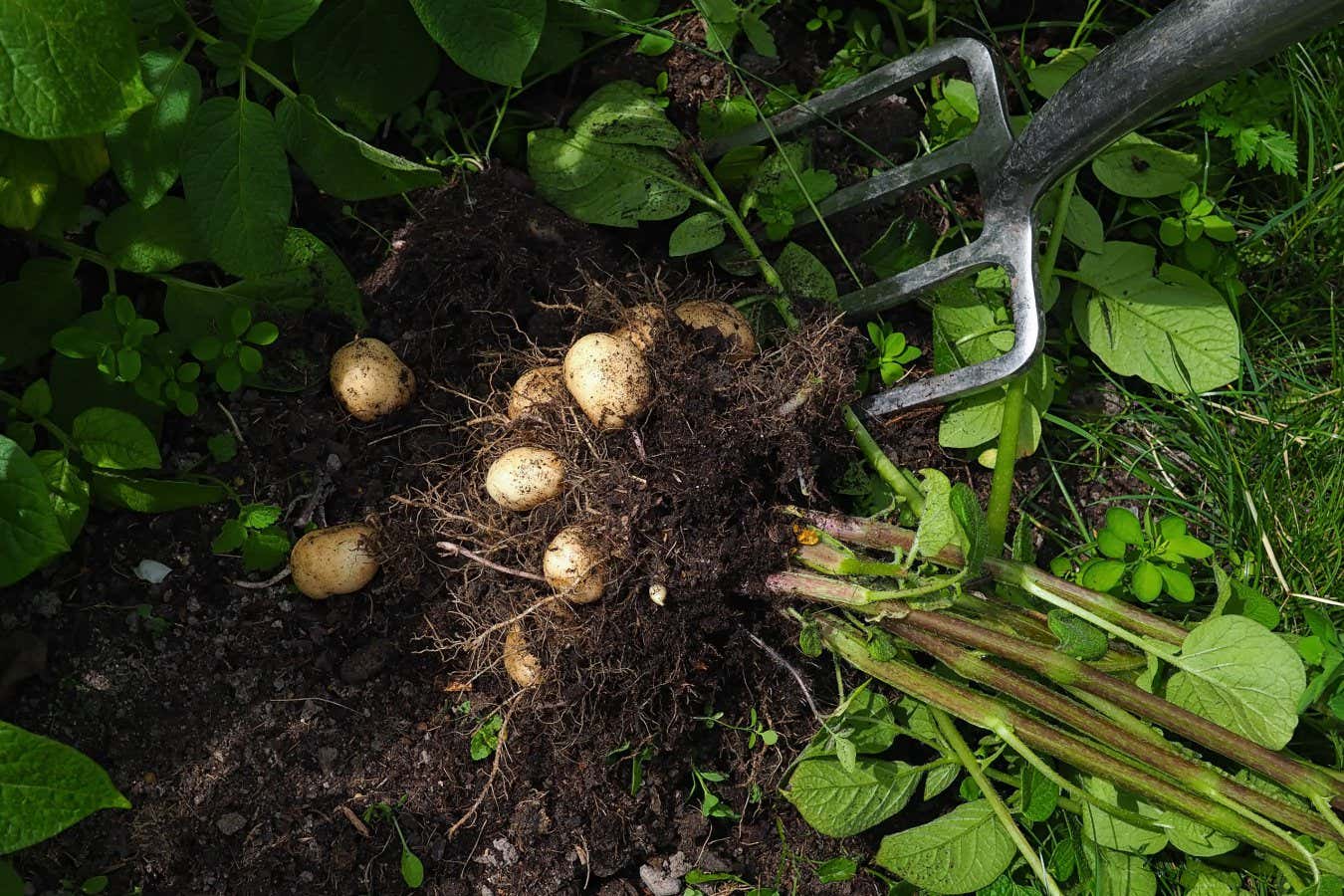Around 8 million years ago, an ancestor of modern tomatoes in South America hydridised with a plant called Etuberosum, and this reshuffling of genes gave rise to the potato
By James Woodford
31 July 2025
Potato tubers are the result of an ancient hybridisation event
Jackie Bale/Getty Images
The humble potato, it turns out, is the product of a tryst between an ancient tomato plant and a lesser-known South American lineage named Etuberosum.
Etuberosum plants are often described as looking like a potato plant, except for one crucial difference – they don’t produce the starch-rich tubers that have made cultivated potatoes one of the world’s most important food staples.
Read more
The extraordinary ways species control their own evolutionary fate
Advertisement
Sandra Knapp at the Natural History Museum in London and her colleagues studied the genetics of three groups of plants in the genus Solanum: Petota, with 107 species including cultivated potatoes ; the tomato group, with 17 species; and Etuberosum, with three species. The three lineages shared a common ancestor around 14 million years ago.
The team looked at 450 genomes from cultivated potatoes and 56 wild potato species and found there was, in every one of them, a steady mix of tomato and Etuberosum genes.
The results suggest that the potato lineage stems from a hybridisation event between the ancestors of the tomato and Etuberosum groups, probably around 8 million years ago in what is now Chile.
